When we think about the requirement of the data storage system of any Business organization, the obvious question comes to our mind what the data growth rate is.
Data growth is the explosion of data comes from human and machine. Data growth has increasing based on the size, quantity, and lifespan of the organization. With the growth of IT and digitalization of the system, organizations are producing more information in electronic format rather than paperwork such as Email, home directories, scanned documents, daily financial transaction, employee’s data, telecommunications, medical image systems, and utility equipment. Data storage has become increasingly more important area with the growth of data because the industries, enterprises are stored their data in the data center, as a result data center is growing at an unprecedented rate.
The size of the storage capacity has been growing dramatically day by day. Kilobyte, Megabyte, Gigabyte, Terabyte are commonly used size in last decade but petabyte –size is no longer an rarely. Not only data is stored in the storage, but also the data must be accessed by various constituencies in a different location, and repeatedly in a fast-paced, collaboration manner. Enterprises depend on accessing a wide variety of data objects to run their mission-critical workflows.
The question is what is the solution of data growth? – The simple answer: Data storage solution!
The data storage solution is considered based on organization data growth rate. The solutions are disks, disk arrays, JBODS, and Intelligent storage system.
The characteristics of the storage solutions:
Disk:
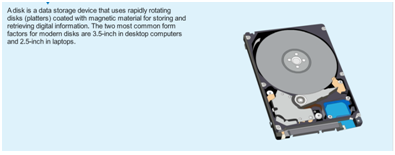
Disk array:
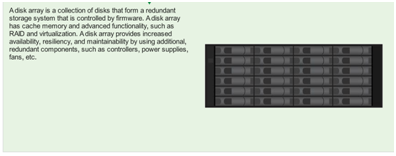
JBOD (Just a bunch of Disks)
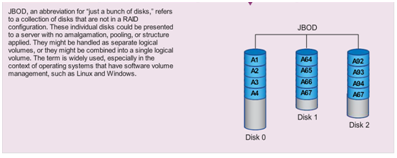
Intelligent storage system
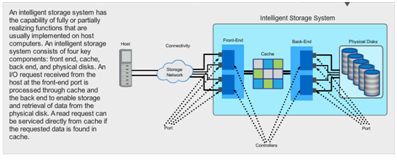
What factors organisations need to consider when investing in a storage solution: Before investing in a storage solution, organisations need to focus on the following major factors
- Applications: what are the organisation application requirement in regards to data stored, performance, capacity and energy consumption? And what applications including SQL, Exchange, Oracle and VMware, among others, need to be supported by the storage?
- Data protection: What is the alternative solution of data disaster? What are the organisation growth plans along with data protection requirements? How to organisation will minimise the minimal data loss, how to handle disk failure or natural disaster such as fire, flood?
- Data availability: How to recover the lost data and how to make data available to the client as soon as possible? And what is the performance of storage? The factor must be considered such as hardware redundancy, Application availability and disaster recovery systems.
- Data Security: How to control Intrusion from outside, Internal security Breaches? And what is the implementation of data security?
- Scalability: A good storage solution should be scalable and one way to ensure scalability is to have storage grid.
- Performance: Performance must be considered on throughput, response time, capacity and reliability
- Cost: Cost of storage is an important consideration for organisations – Cost of buying the storage system and cost of managing the storage system. Cost effective solution is Simple to manage, highly available, reliable.
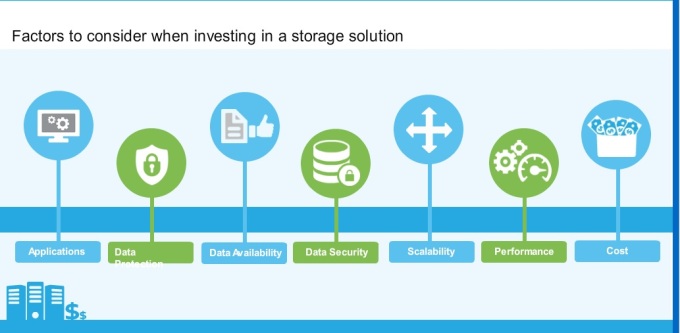

You must be logged in to post a comment.